Last Updated on June 3, 2023 by Ellen
I come from Cleveland, Ohio. There are no monkeys. Well, there are some at the Cleveland Metroparks Zoo. But monkeys in their natural habitat have always been a novel curiosity to me. They always seem so mischievous; leaping around, screeching, eating from trees, throwing excrement, laughing? Like very bad kids – the worst. The kind I fear. In fact, the behavior of monkeys might be one of the reasons I’ve never fathered any children.
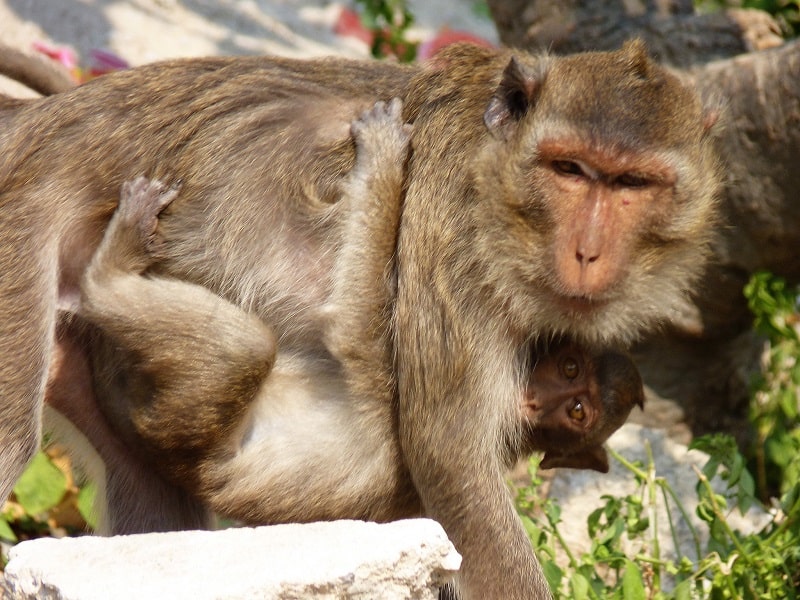
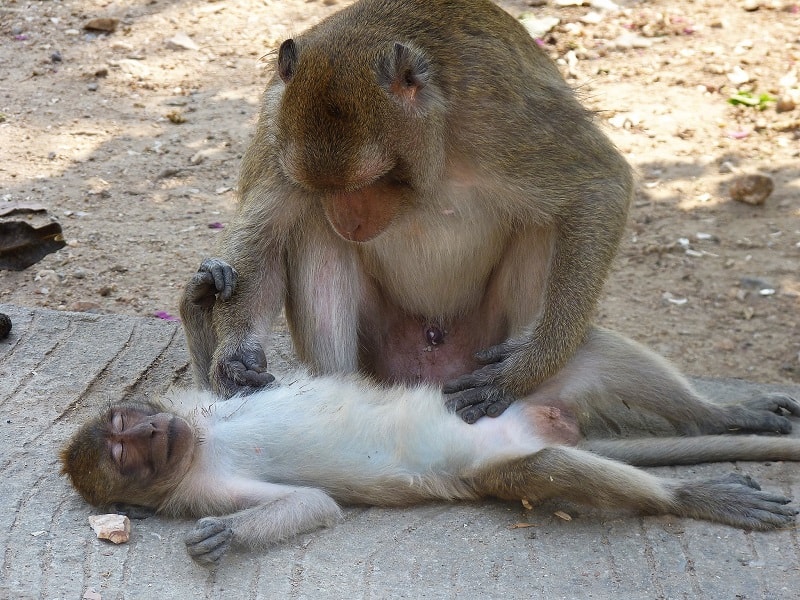
We’ve seen them numerous places during our travels; in the wild in Belize, Costa Rica, Nicaragua and Malaysia — and as captive tourist teasers in Mexico and Morocco. Actually, every ape I’ve ever seen has been tainted by tourism. Even the noisy, smelly, howler monkeys in the remote rain forests of Central America were used to being glimpsed – and fed – by human beings. Still, I’ve never witnessed anything like what I recently saw at a Buddhist temple complex in Thailand.
Khao Takiab is a small seaside hill at the southern end of the tourist zone in Hua Hin, Thailand. It is a beautiful and sacred place with spectacular views of the Gulf of Thailand and the coastline of Hua Hin. A Buddhist temple complex with numerous statues, pagodas, prayer halls and other structures is sprinkled amidst the palm trees and rocky outcrops. As with many such complexes, there are vendors and food stalls and a parking lot. There are also monkeys. Hundreds and hundreds of monkeys.
As I hiked up the steep dusty gravel driveway to the Takiab complex, I immediately noticed the abundance of little primates. Before I could even see the temple structures I was snapping photos of families of 6 to 8 to 10 animals – many very young, small and cute. When I got to the parking area there was a group of males casually ransacking a cooler in the bed of a pickup truck. I took a few more pics of them pulling out and discarding unopened water and soda bottles. And as I passed the vendor area, I couldn’t help but notice many more creatures sitting, sunning, swinging, scampering, etc.
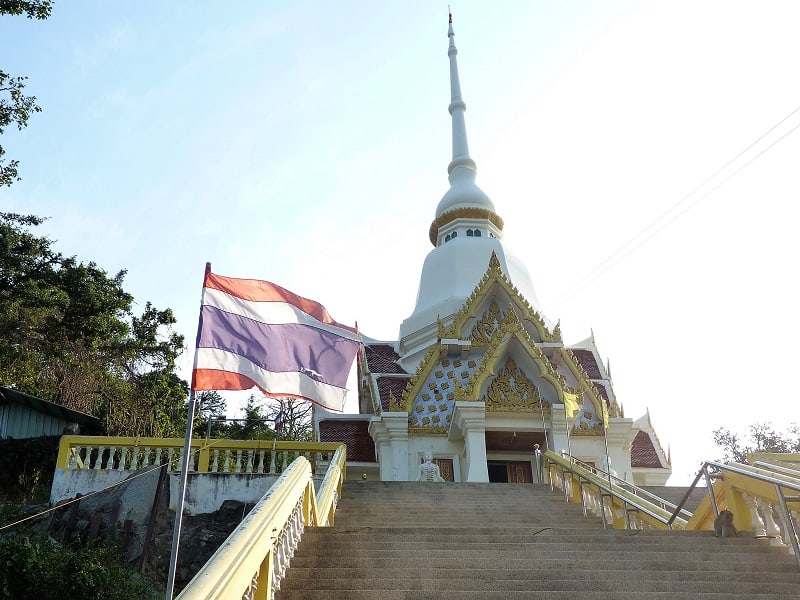
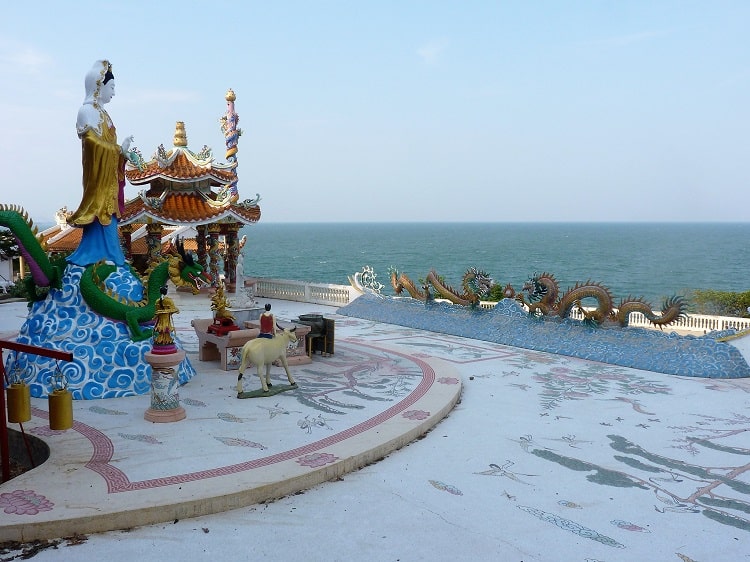
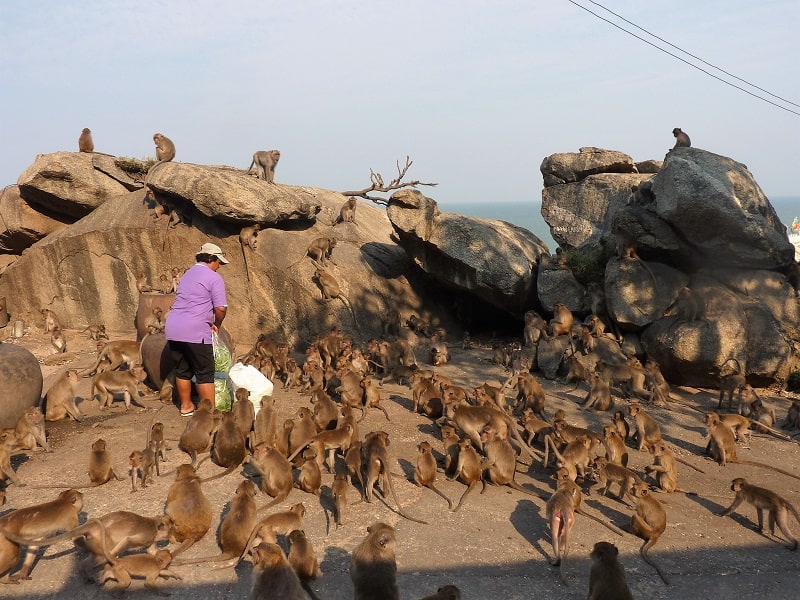
When I got to the small park-like area where the Gulf of Thailand is first visible – bedlam! Dozens and dozens of knee-high, brown macaque monkeys were in a frenzied fight for food. It was like a pack of dogs – times 100! There was screeching and snarling and a manic mass of splotchy colored fur. It was surreal – and actually, a little scary.
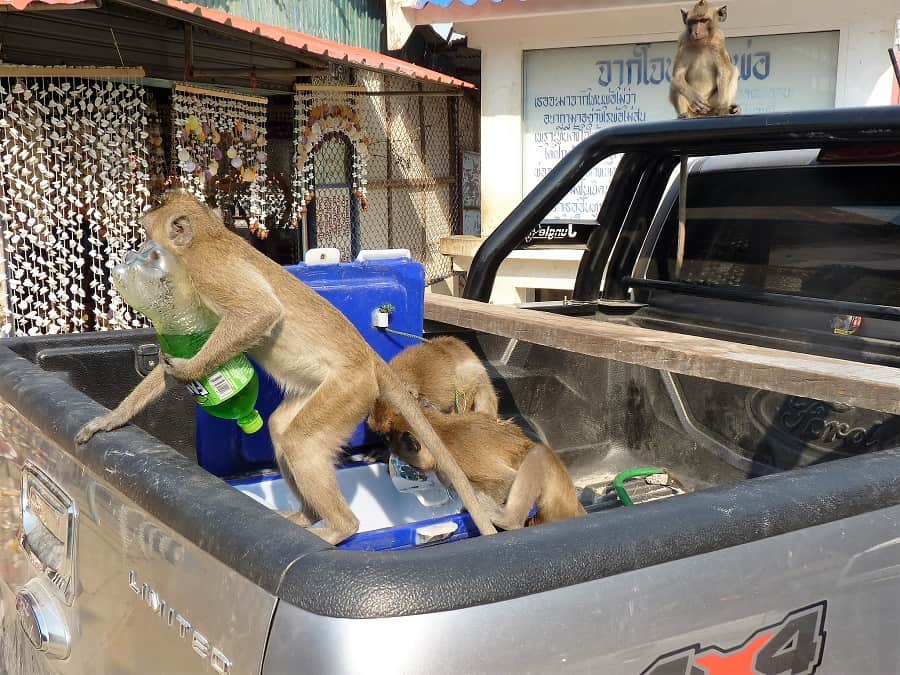
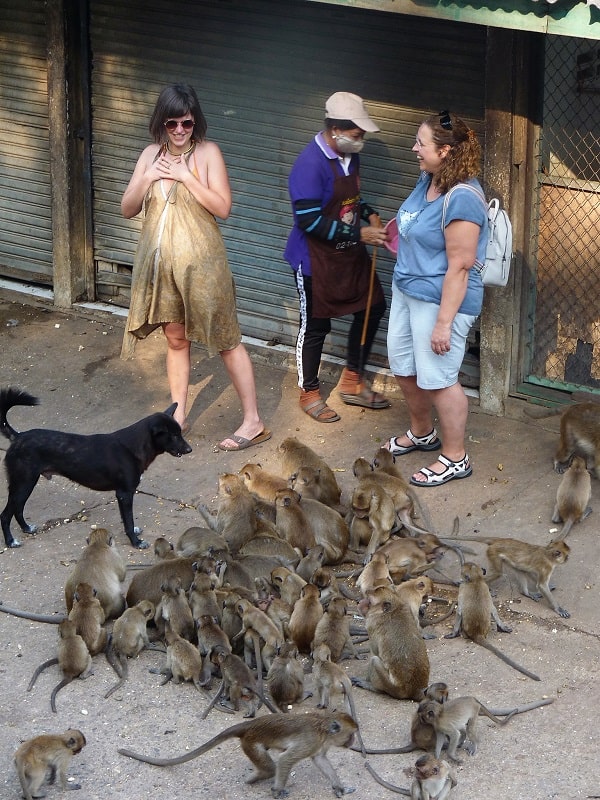
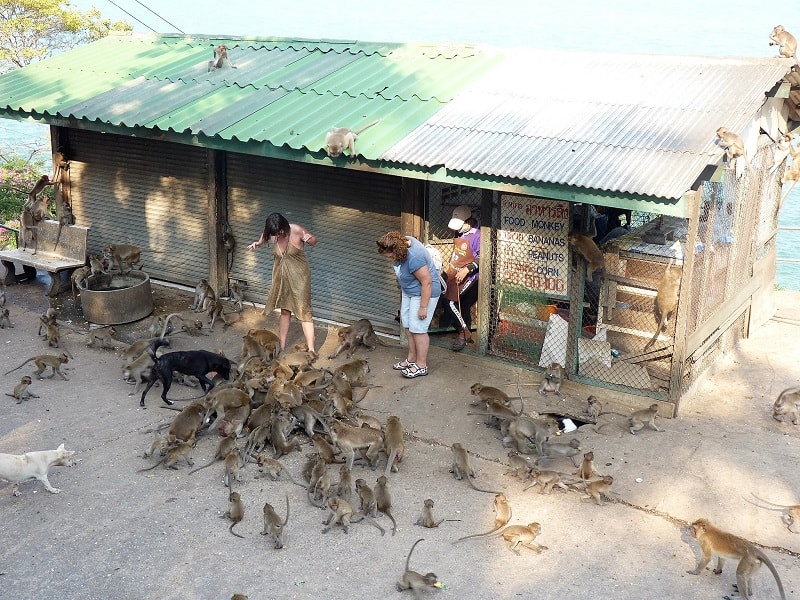
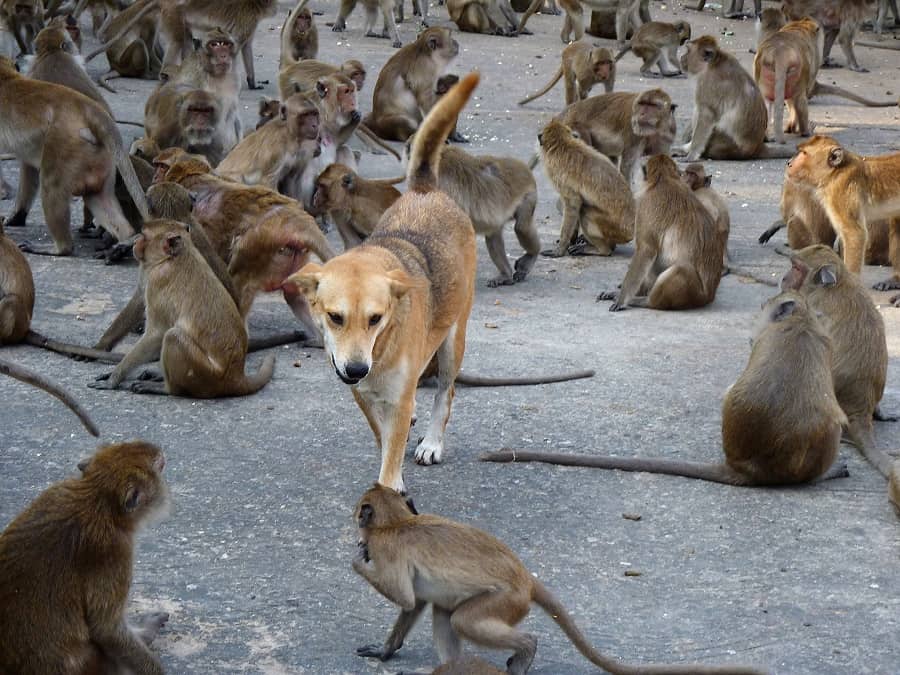
A bucket of mixed food: fruit pieces, corn, and some kind of lettuce, had been dumped on the ground and scene was a free-for-all. Individual disputes resulted in tugging matches, growling and screaming. Hungry creatures with their hands full would sometimes break out of the pack and dash for open space — sometimes running right past me, even though I was probably 20 to 30 feet away.
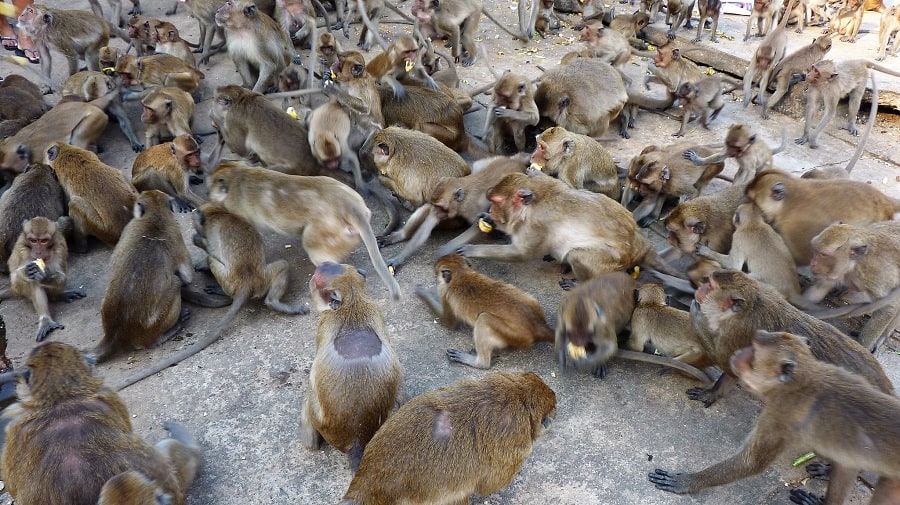
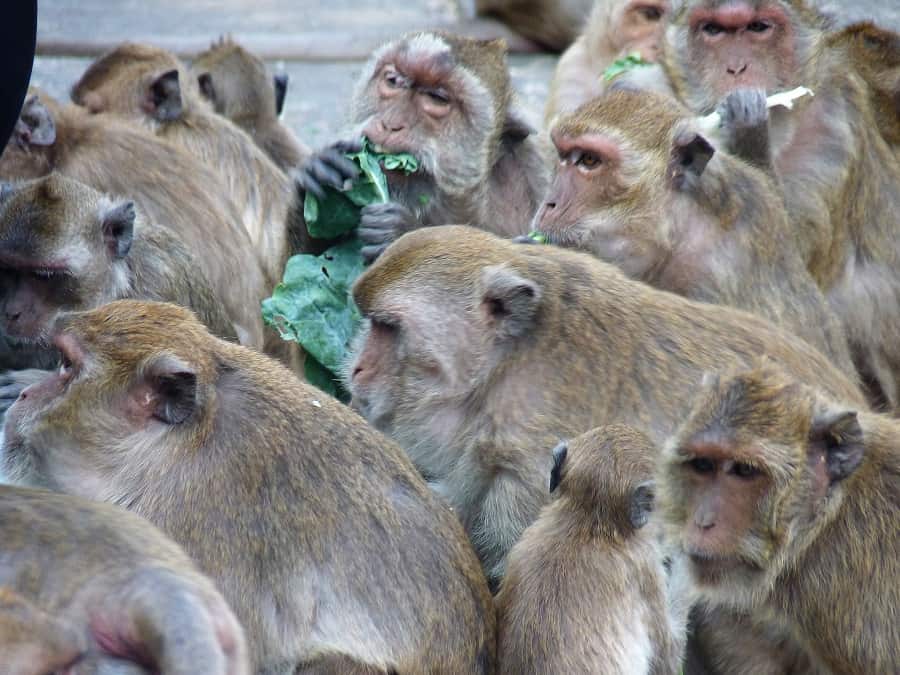
As I photographed the melee, I glanced around me, and realized other monkeys – not involved in the scrum – had arrived, and like me, were watching the chaos. Most of these peaceful observers seemed only mildly interested, and sometimes would stroll or sit only a foot or two away from me as if we were acquaintances. I couldn’t help but wonder what they were thinking – and if they had seen ‘Planet of the Apes’. Indeed, it occurred to me that although they were only a couple feet tall at most, as a group, these creatures could tear a human being to shreds in minutes.
It soon became clear exactly what was happening. There was a local vendor, in a caged stall, selling the food buckets. Tourists would pay 100baht ($3.20usd) then supposedly be able to enjoy feeding the monkeys. As I had just witnessed, it didn’t quite work that way. First, the vending cage itself was under siege at all times. The surrounding chain-link fencing was often covered with the hungry creatures. When a human customer approached, the female vendor would crack open the door, start shrieking in Thai, and thrash at the wall of monkeys with a wooden cane – momentarily dispersing the critters – so she could make a food bucket sale. No sooner would the food purchaser take possession of the bucket then the hoard of apes would basically attack them.
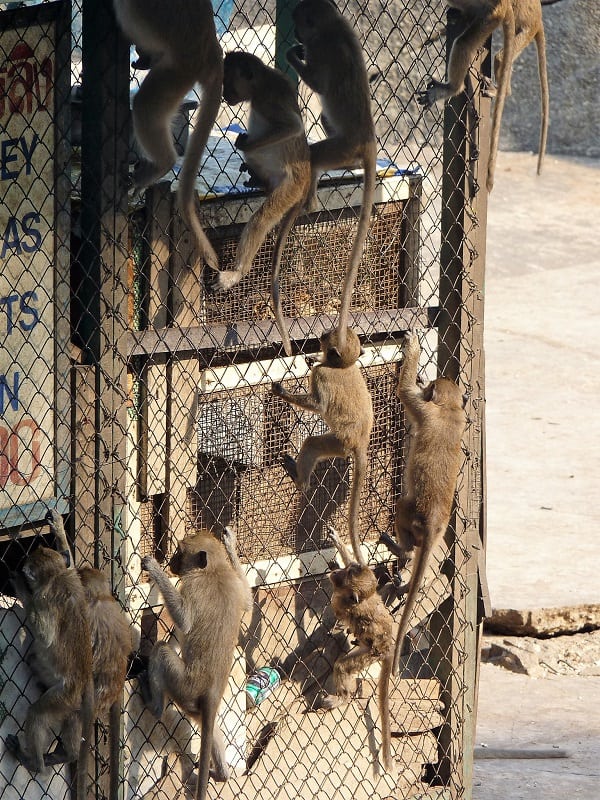
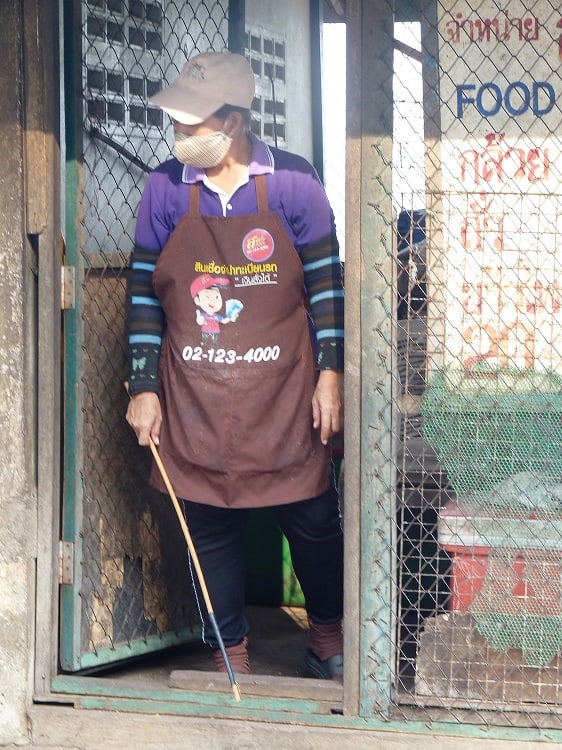
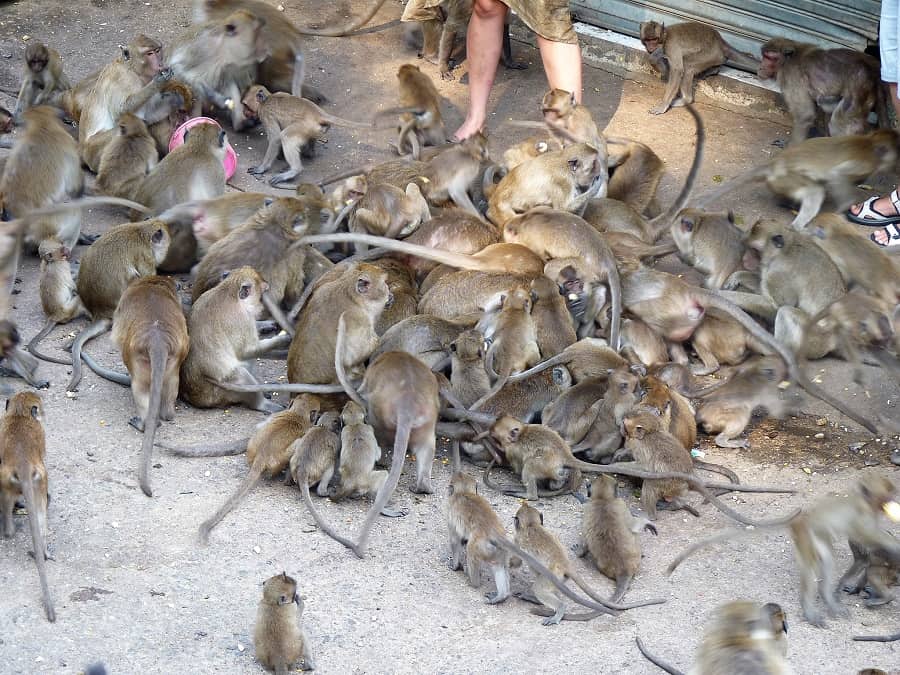
I watched as a mother/daughter duo speaking German or Dutch bought a bucket then immediately dropped the whole thing as soon as they turned around and the monkeys started climbing up on them.
Another middle-aged guy, with a young Thai woman in tow, managed to get a few feet from the selling cage with his bucket. As his date took photos, several monkeys climbed up his body, hanging from his arms and neck as he held the bucket high. At one point I noticed a monkey had even positioned itself over his face as it tried to grab the plastic pail above his head!
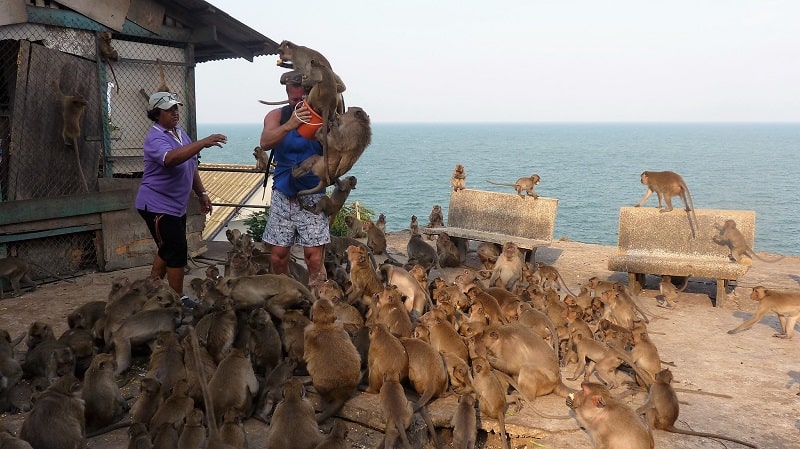
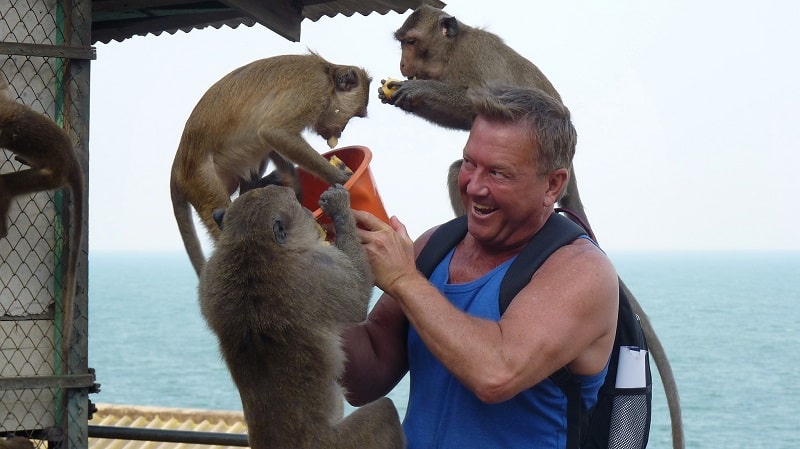
Now, I don’t know about you, dear reader. But I myself do not want a frenzied, wild, Thai monkey’s belly, armpits, ass or genitals rubbed up against my nose and mouth. Fleas? Mange? STDs? Good lord! Not my vision of monkey feeding fun.
After observing this craziness for about 45 minutes, I did move on to tour around the rest of the Mount Takiab complex. Throughout, I don’t think I was ever out of sight of at least a few monkeys – although most of them stayed near the feeding area. The rest of the grounds and temples and views were beautiful, peaceful and photo friendly. I highly recommend any visitor to Hua Hin spend a couple hours at this free and bizarre attraction.
As for all those monkeys? I wonder how long that kind of fracas will be allowed to continue – even in Thailand? And how long does it take for 500 monkeys to become 5,000? 50,000? What will they eat? Who will they bite?
Later, at the beach below Khao Takiab, I watched a big monkey run out of the trees, across the beach, and grab an ice cream cone right out of the hand of a 10-year old little girl… lol. They were also pillaging an unattended boat, rummaging through all the compartments, tearing open packages, tossing items into the water.
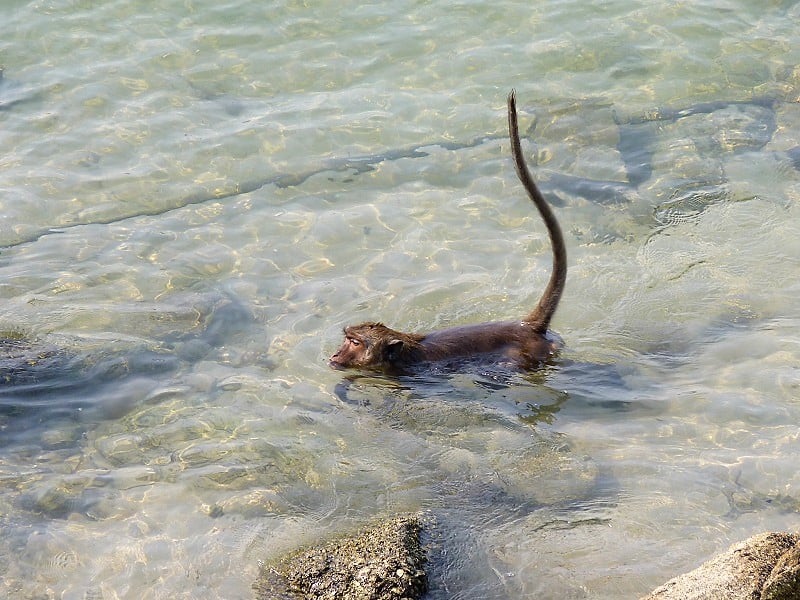
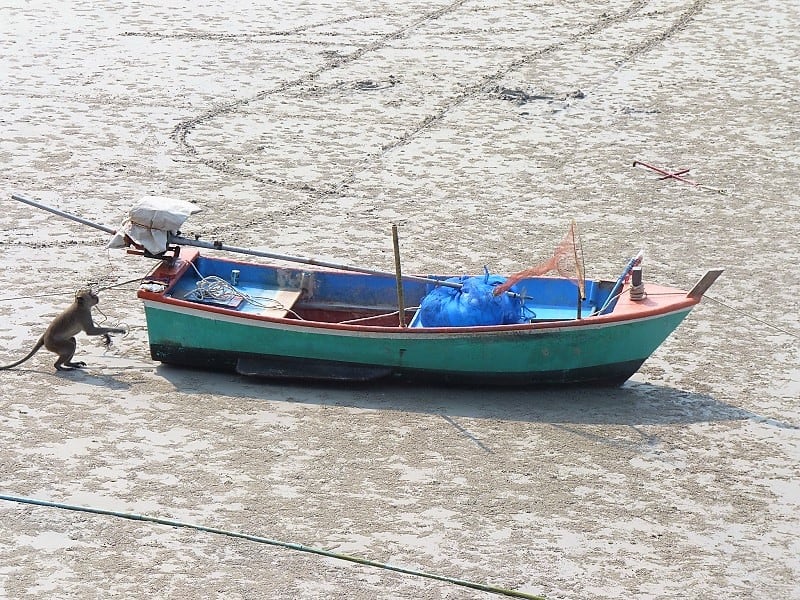
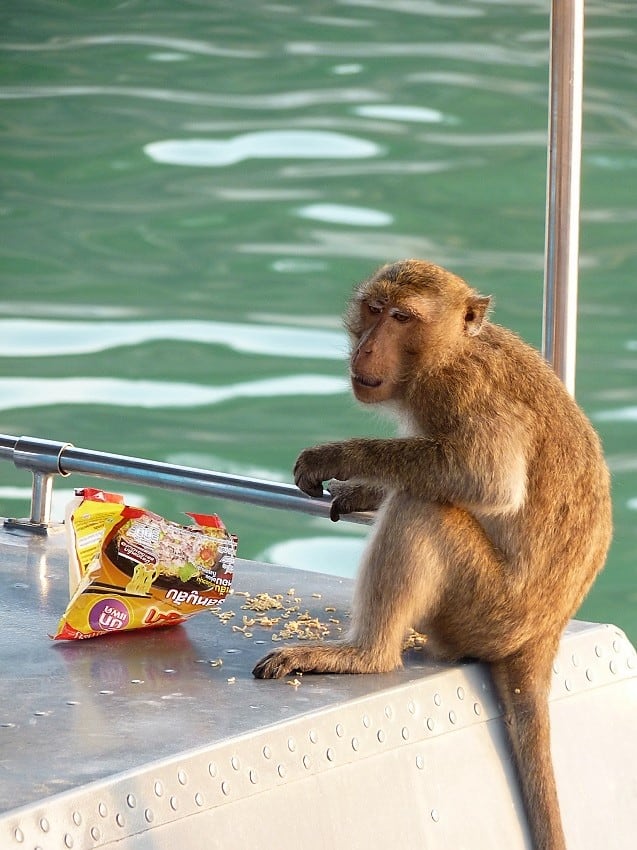
But how would they get rid of them all? Call the pound? The monkey catcher? Poison? Then? The carcasses? For now, the many misbehaving macaques of Mount Takiab will continue to make tourist mayhem and memories on their merry mountain. And I won’t be fathering any children.
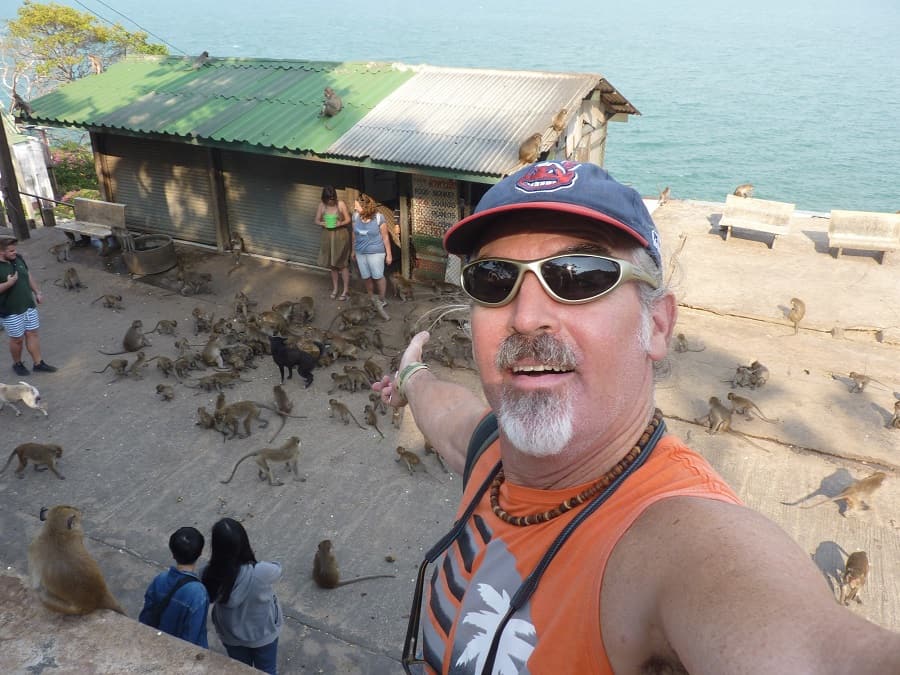

I encountered monkeys on my recent hike in one of Hong Kong’ Country Parks. There were signs everywhere explaining that these monkeys were recent arrivals, pleading with people not to feed them lest they become a menace, and threatening heavy fines for doing so.
This made my skin crawl…& forget about spending a couple hours there! YUCK!